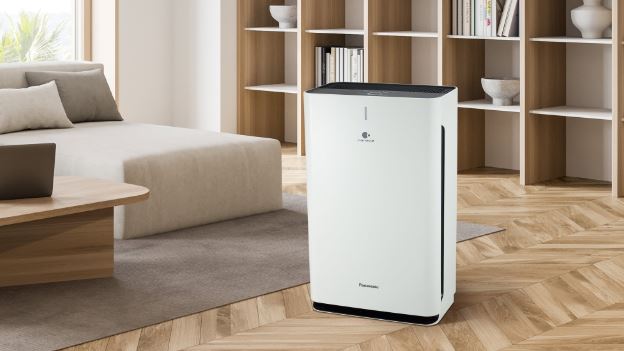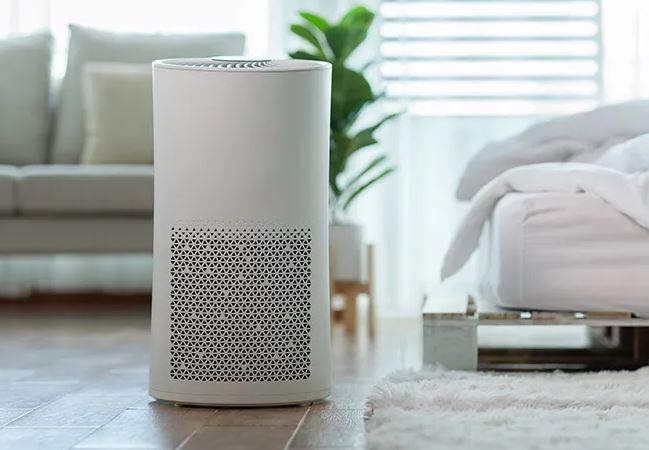Best Air Purifiers for Asthma: Breathe Easier with These Options
Wiki Article
In a health-conscious world, the air we breathe in has taken center stage for homeowners and health-conscious individuals. With increasing environmental pollution and a deeper insight of the effects of indoor pollutants on our health, it's no surprise that the demand for air purifiers is on the rise.
Air purifiers are appliances that remove contaminants from the air in a room, promoting healthier indoor air. They are especially advantageous for those with allergies, asthma, or respiratory concerns as they can drastically decrease the levels of allergens, pollutants, and irritants in the air. Even healthy individuals can rely on the added protection of air purifiers, as they give added assurance and protect against airborne pathogens.
This guide will dive deep into the intriguing world of air purification, exploring their benefits, the variety of options on the market, crucial aspects to think about when selecting the right model, and maximizing your air purifier's potential. By the end, you should have a thorough grasp of air purifiers and be able to decide confidently about whether investing in one is the right choice for your household.

Decoding Air Pollutants and Their Effects on Well-being
To appreciate the value of air purifiers, it's vital to understand the types of pollutants they target and the likely impact of exposure to these contaminants.
Indoor air pollutants can be generally classified into three main types:
- Particulate Contaminants: This includes solid and liquid droplets suspended in the air. Examples include pollen, smoke, dust, pet dander, and mold spores, to name a few. Particulate matter can cause respiratory issues and set off allergic responses.
- VOCs: A Concern for Indoor Air: VOCs are gases emitted from various solids or liquids. Sources of VOCs include cleaning agents, paints, aerosol sprays, pesticides, and similar products. Exposure to VOCs can lead to eye, nose, throat irritation, headaches, and stomach discomfort.
- Biological Contaminants: These include bacteria, viruses, mold, and mildew. They can cause a variety of health problems, from mild allergic reactions to severe infections.
The impact of these contaminants on human health can differ considerably. For people with respiratory issues or a vulnerable immune system, exposure to indoor air pollutants can lead to significant health complications. Even those in good health, prolonged exposure over time to certain pollutants can impact respiratory health and overall well-being over time.

Unraveling Air Purification Technology
Air purifiers use a range of physical and chemical mechanisms to trap and eliminate airborne pollutants. Understanding the underlying principles employed by purifiers will help you grasp how they work and the array of models on the market.
Here are the core processes and cutting-edge technologies used in air purifiers:
- The Power of Mechanical Filtration: This is the predominant technique used in air purifiers. It involves using specialized filters to capture particles as air is drawn into the purifier. The filters can be made from various materials, each designed to capture specific types of particles. For example:
- Pre-filters: The First Line of Defense: These are usually the first line of attack, trapping bigger contaminants like hair and dust.
- HEPA Filters: The Gold Standard: HEPA filters are exceptionally efficient at capturing microscopic particles, including pollen, dust mites, and some bacteria and viruses. To be labeled a genuine HEPA filter, it must trap a minimum of 99.97% of particles down to 0.3 microns in size.
- carbon or charcoal filters: These filters are designed to reduce VOCs and odors.
- Ionizers: Ionizers use electricity to create negatively charged ions, which bind to particles in the air. The charged particles are drawn to nearby surfaces or the purifier itself.
- Ozone's Double-Edged Sword: Some air purifiers use ozone as a potent disinfectant to destroy contaminants. While effective, ozone is a respiratory irritant so these types of purifiers should be used with caution and only in unoccupied spaces.
- UV Light: A Radiant Solution: UV light can be used to effectively eliminate bacteria, viruses, and mold. UV light is often used in combination with a filter to trap particles, and UV light provides an extra layer of protection against biological hazards.
The Ultimate Air Purifier Guide
With a plethora of options available, selecting the ideal air purification system can be a difficult decision. It's important to consider multiple factors to ensure you make the correct choice for your particular needs and room size.
Here are some crucial points to consider:
- Sizing Up the Room: Air purifiers are typically rated according to room size, so it's important to choose a model that can efficiently purify the air in the designated space. Most purifiers will list a suggested room size or CADR rating, which indicates the rate at which it can deliver clean air.
- Targeted Pollutants: Identify the particular contaminants you want to target. If you suffer from allergies, look for a purifier with a HEPA filter. For reducing unwanted smells, consider a model with a activated carbon filter. If you're concerned about pathogenic microorganisms, a purifier with UV-C light might be best.
- Noise Level: Air purifiers can produce a range of noise outputs, so if you plan to use it in a serene environment, look for models with a sleep mode or quiet setting.
- Maintenance and Costs: Consider the regular maintenance and associated costs of the purifier. HEPA filters generally require replacement every 6 to 12 months, depending on use and environmental factors. Factor in the cost of replacement filters when making your choice.
- Enhancing Your Experience: Many purifiers offer smart features like wireless connectivity, air quality sensors, and smart modes, allowing convenient remote access and monitoring. These features can enhance the convenience and effectiveness of your purifier.
Optimizing Performance of Your Air Purifier
Once you've invested in an air purifier and set it up, there are several things you can do to ensure it operates at peak performance and delivers the greatest advantages:
- Strategic Positioning: Position your purifier in an open area, away from walls and furniture, to ensure efficient air circulation. Avoid placing it near external openings as drafts can impact its efficiency.
- Keep it Running: For the best results, it's recommended to run your purifier around the clock. Many models have energy-saving features or smart modes that respond to air quality changes, so you can maintain clean air without running up a huge energy bill.
- Maintain the Filters: Regularly follow the manufacturer's filter replacement guidelines. Over time, filters become saturated with particles, affecting efficiency. Schedule filter replacements so you don't forget.
- Limiting Indoor Pollutants: Alongside using an air purifier, take steps to minimize indoor air pollutants. This could include frequent dusting and vacuuming, opting for natural cleaning solutions, and reducing chemical or aerosol usage. Report this wiki page